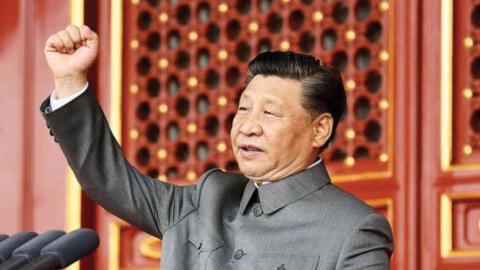When Australia’s Foreign Minister Marise Payne and Defence Minister Peter Dutton arrive in Washington this Thursday to meet with their American counterparts for the annual bilateral talks known as AUSMIN, China will loom larger than ever.
Ms. Payne and Mr. Dutton are here to build on President Biden’s promise to work more closely with allies to manage or confront the worst aspects of Chinese behavior. Will the U.S. deliver?
America has many allies, but Australia is one of the more reliable in a time of genuine need. Australia has been involved in every major conflict Americans have taken part in since the Second World War and is one of the few countries in the Indo-Pacific prepared to directly counter Beijing’s illegitimate or coercive behavior. The country has the bruises to show for its stand against the Chinese Communist Party (CCP) — in the form of ongoing economic punishments against Australian exporters. Regardless, there is bipartisan political support within Australia to stand firm and absorb the cost of doing so.
While America and its allies have spent the last three decades magnanimously preserving the peace, the People’s Liberation Army (PLA) has been assiduously preparing for war. The PLA’s primary target is Taiwan, but we all know its ambitions won’t end there. Beijing has been clear that it will use whatever means available, including the use of force, to achieve its objectives in the East and South China Seas.
It’s become increasingly clear that we have less time to prepare and respond to this threat than we assumed just a few years ago. Recent advances in Australian strategic and military thinking reflect this recognition: The 2020 Defence Strategic Update (Australia’s principal public military strategy) maps out a plan to develop asymmetric capabilities such as longer-range missiles, unmanned vehicles, and offensive cyber resources to shape the strategic environment, deter other countries, and respond to any use of force against an enemy. It accepts that Australia could be obliged to fight a more powerful conventional Chinese foe, not necessarily to defend its territory, but as part of a coalition of the willing somewhere in East Asia.
America should be pleased that Australia is preparing to play its part in any collective action to check CCP expansionism. Even so, the timeline to bring in these and other military assets stretches to the next decade and beyond. That is not good enough, because Chinese President Xi Jinping is nothing if not impatient.
The odds are increasing that Beijing will use force — perhaps in Taiwan — in a few short years. If Australia is to help shape the environment or contribute meaningfully to American-led efforts to deter or respond to the martial intentions of China, America must accelerate Australia’s development and deployment of these weapons.
The ground was prepared for this following the 2017 decision to include Australia in the congressionally-mandated National Technology and Industrial Base. Along with Canada and the United Kingdom, this enables Australia to participate in joint research and development in defense-related sectors, including those related to the asymmetrical capabilities that will be effective against the PLA. But stringent export controls are still being applied to trusted allies. AUSMIN must begin the process of removing these.
Meanwhile, East Asia is a vast expanse of maritime and continental territory, and America requires more areas from which it can operate. In addition to access to military facilities, the U.S. will need stockpiles of fuel, inventories, and munitions in dispersed locations. Australia is superbly positioned in geo-strategic terms as a southern anchor for American and allied forces away from China’s periphery. Such valuable strategic real estate should be better utilized.
There are other, non-martial matters that the U.S. should also follow through on. The Biden administration has promised to support Australia’s stand against China’s economic coercion, but its deeds will determine the worth and credibility of American words. America can lead a coalition of nations to identify and call out Chinese economic coercion, join onto World Trade Organization actions against China, and impose collective measures against China outside of the WTO system. Additionally, many developing countries in the Indo-Pacific face a long road to recovery from the devastation wrought by COVID-19, creating opportunities for China to use its state-directed resources to offer largesse in return for subservience. They need America and its allies to provide an alternative.
Beijing consistently characterizes American alliances as Cold War relics that will prove ineffective in preventing China’s inevitable rise and dominance. Its goal is to sow doubt about the resilience, strength, resolve and wisdom of the world’s liberal democracies, and America most of all.
If AUSMIN delivers little of substance, it will be offered as more evidence the democracies are in retreat and that this administration does not have what it takes to turn the tide.
After recent events in Kabul, faith in American leadership is faltering and needs to be righted urgently. In Australia, America has a willing and proven ally to help it do just that.
Read in The Hill



















